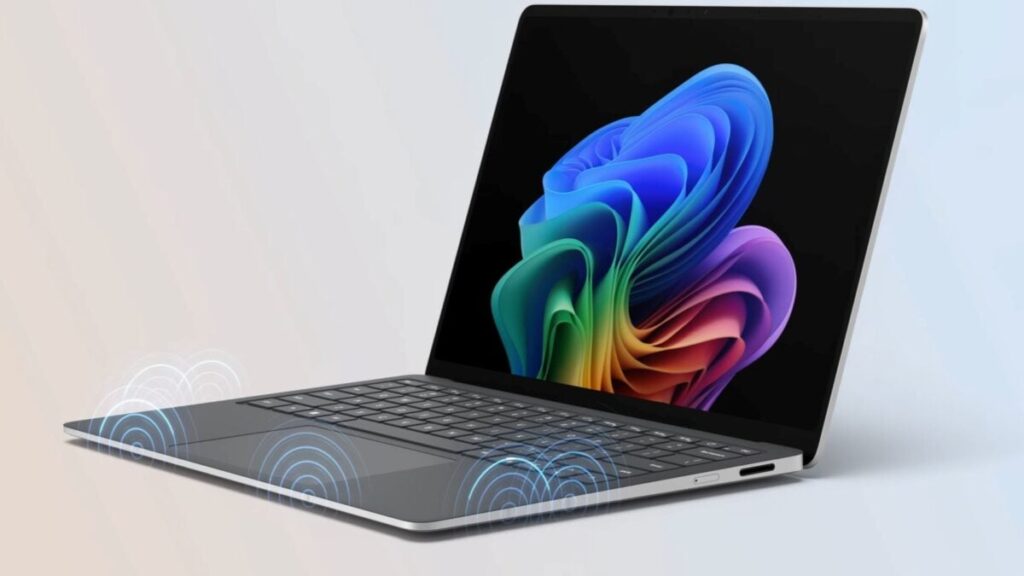
Microsoft’s recent decision not to include a 5G option in its 2025 lineup of Surface devices has sparked discussions among tech enthusiasts and industry experts. Instead, the tech giant opted to release a business-oriented version months later, with a starting price nearly double that of its consumer counterpart. This move highlights the growing demand for laptops that offer seamless internet connectivity without relying on unreliable public Wi-Fi networks.
The unveiling of the 14-inch Surface Laptop for Business, priced at $1,600 for a model with just 512GB of storage, has raised eyebrows. Opting for the 5G version pushes the starting price to $1,800, and that’s for the most basic specifications. For those seeking higher performance, a model equipped with an Intel Core Ultra 7 processor, 32GB of RAM, and a 1TB SSD is priced at a staggering $2,700 before tax. Additional costs, such as a Microsoft 365 subscription or a wireless internet plan, further elevate the expense, making it a viable option only for well-funded business executives.
The Demand for 5G Laptops
Microsoft’s blog post revealed that 5G was “one of the most requested features from our business customers.” However, the demand for 5G connectivity extends beyond the corporate world. Many users, including freelancers and remote workers, yearn for the ability to work from anywhere without relying on a phone hotspot. Despite this demand, Apple’s Mac users have yet to see a 5G laptop option, with rumors suggesting a potential release as late as 2026.
The high cost of 5G laptops can be attributed to the additional components required for cellular connectivity. The 5G Surface Laptop for Business includes a nano SIM slot and has been reengineered with new materials to facilitate radio signal transmission. The device features six antennas that automatically adjust the signal based on how users hold it, addressing issues seen in past devices like the iPhone 4’s reception controversy.
Comparisons and Market Implications
The price disparity between the Surface Laptop for Business and other 5G-enabled devices is significant. For instance, adding 5G to an iPad Air costs approximately $150, a stark contrast to the premium pricing of Microsoft’s offering. Historically, 5G laptops have been rare, with models like the 2022 ThinkPad X13s and the HP EliteBook 1040 G11 being notable exceptions. Microsoft’s 2024 Surface Pro also debuted with a 5G model, indicating a potential shift in the market.
Interestingly, Microsoft has chosen to rely solely on Intel chips for its 5G Surface Laptops, despite the availability of ARM-based Qualcomm Snapdragon X Elite chips that offer default wireless 5G or 4G LTE connectivity. This decision may influence future design and pricing strategies, as manufacturers explore ways to make 5G laptops more accessible to a broader audience.
Future Prospects for 5G Laptops
The introduction of 5G technology in laptops could revolutionize the perception of portable computing. If Microsoft and other manufacturers can refine, miniaturize, and reduce the cost of 5G components, these devices may become more mainstream. However, if the high costs persist, 5G laptops may remain exclusive to high-end models designed for executives with substantial budgets.
The current landscape suggests that the journey towards affordable 5G laptops is just beginning. As technology evolves and consumer demand grows, the potential for innovation in this space is immense. The challenge lies in balancing cutting-edge features with affordability, ensuring that the benefits of 5G connectivity are accessible to a wider range of users.
In conclusion, while Microsoft’s current 5G Surface Laptop for Business caters primarily to corporate clients, it sets the stage for future developments in the laptop market. As competition intensifies and technology advances, the dream of affordable, high-performance 5G laptops may soon become a reality for all.





